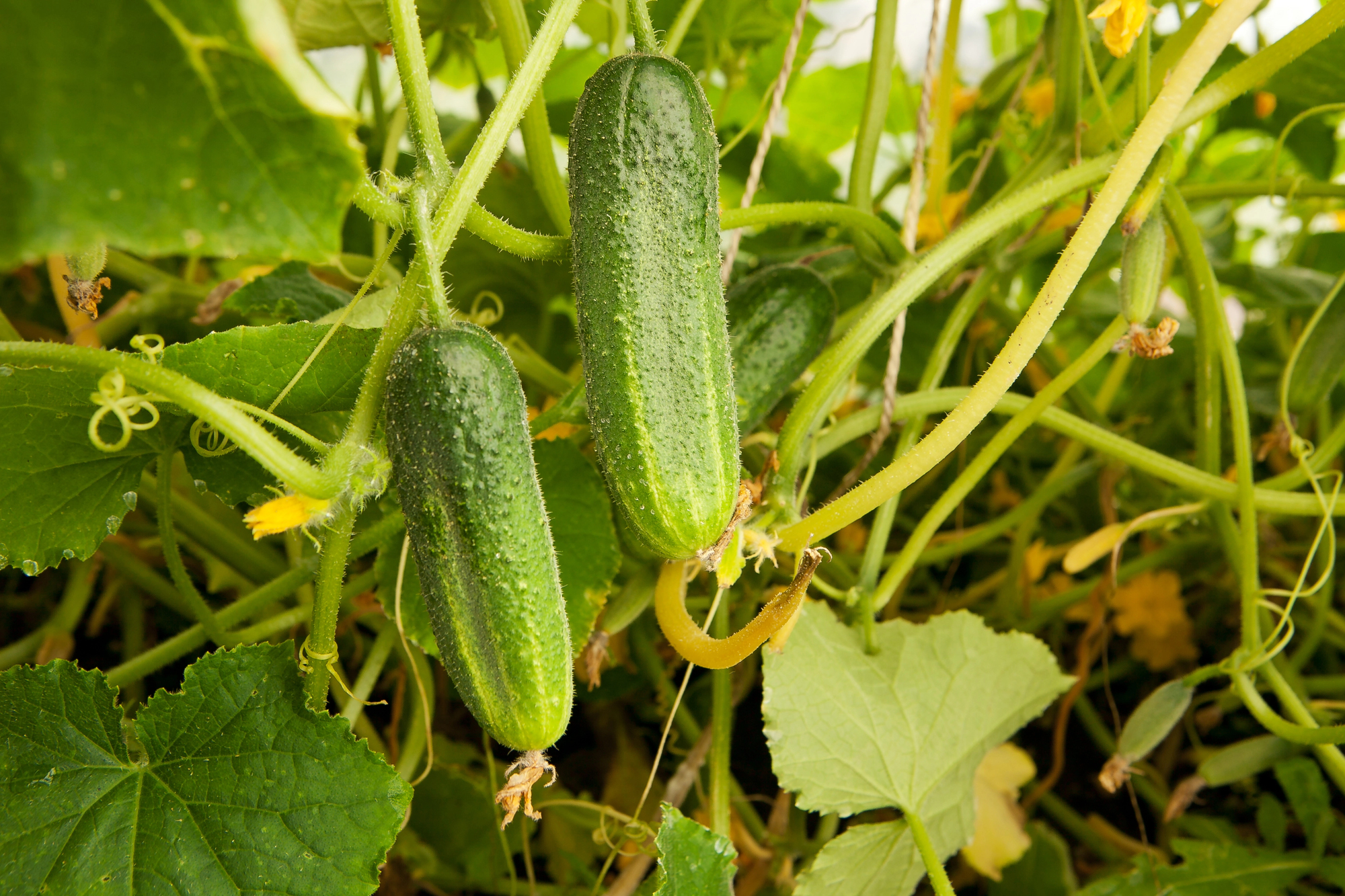Cucumber Donation Tracker
Quick Links: How & Where to Grow | Temperature | How to Care For | Harvest Signs | Harvesting | Pruning/Trellising | Pests | Companions | Varieties | Preservation | Recipes | Michigan Tips | Fun Facts
🌱 How & Where to Grow Cucumbers:
- Direct sow when soil 60°F or start 3-4 weeks early.
- Space plants 12 inches apart in rows or 2-3 per hill.
- Install trellis at planting – vertical growing saves space and prevents disease!
- Sunlight: Full sun (6-8 hours) for best production.
- Soil Type: Rich, well-drained soil with pH 6.0-7.0.
- Soil Amendment: Add compost and ensure excellent drainage
Cucumbers are 96% water – consistent moisture is the key to crisp, non-bitter fruits!
🌡️ Temperature Guidance:
Minimum 60°F soil. More cold-tolerant than melons.
- Planting: Wait for consistent 60°F soil temperature.
- Growing: Optimal growth at 65-75°F.
- Growth slows below 50°F.
- More forgiving of cool nights than other cucurbits.
Michigan tip: Late May planting usually avoids both cold soil and peak cucumber beetle pressure!
💧 How to Care for:
- Consistent Moisture: Essential – irregular watering causes bitter fruit.
- Watering: 1-2 inches weekly at soil level.
- Mulch: Critical to maintain even moisture and cool roots.
- Fertilizer: Feed every 2 weeks once flowering begins.
- Support: Train vines up trellis 2-3 times weekly when young.
📏 Harvest Signs:
Slicing: 6-8 inches. Pickling: 3-6 inches. Pick daily!
- Size matters – harvest at the right size for your variety!
- Slicing cucumbers: Dark green, firm, 6-8 inches long.
- Pickling types: 3-4 inches for sweet, 4-6 for dills.
- Yellowing indicates overripe – remove immediately.
Daily harvesting is crucial – mature cucumbers signal the plant to stop producing!
🧺 Harvesting:
Cut stem with knife. Check under leaves. Harvest young.
- Always cut, don’t pull – pulling damages vines.
- Harvest in morning when crisp and cool.
- Check carefully – cucumbers hide under foliage.
- Remove overripe fruits immediately to maintain production.
- Handle gently – bruising affects storage quality.
✂️ Pruning/Trellising:
Train main vine up. Remove lower leaves. Optional: remove laterals.
- Vertical growing on 5-6 foot trellis improves everything!
- Train main stem up trellis, secure with soft ties.
- Remove bottom 6 inches of leaves for airflow.
- For maximum yield: Keep all lateral branches.
- For easier management: Remove laterals below first 5 nodes.
🪲 Michigan Pests:
Cucumber beetles (primary pest), bacterial wilt, aphids.
- Cucumber beetles – striped and spotted types spread bacterial wilt.
- Bacterial wilt – fatal disease with no cure, prevent with row covers.
- Aphids – check undersides of leaves, blast with water.
- Powdery mildew – inevitable by late summer, choose resistant varieties.
🫱🏽🫲🏼 Companions:
Radishes, nasturtiums, marigolds, beans. Avoid aromatic herbs.
- Radishes planted nearby deter cucumber beetles.
- Nasturtiums act as trap crops for aphids.
- Marigolds repel various cucumber pests.
- Beans fix nitrogen for heavy-feeding cucumbers.
- Avoid sage and other aromatic herbs – may affect flavor.
🥒 Varieties:
Slicing: ‘Straight Eight’, ‘Marketmore 76’. Pickling: ‘Boston Pickling’.
- ‘Straight Eight’: 58 days, classic slicer, 8-inch fruits.
- ‘Marketmore 76’: 68 days, disease resistant, reliable.
- ‘Boston Pickling’: 55 days, perfect 3-6 inch picklers.
- ‘Suyo Long’: 61 days, Asian type, burpless, heat tolerant.
- ‘Salad Bush’: 57 days, compact for containers.
🫙 Preservation:
Fresh 7-10 days. Traditional pickling. Refrigerator pickles.
- Fresh storage: Wrap in paper towels, store in crisper.
- Dill pickles: Traditional fermented or vinegar method.
- Bread & butter: Sweet pickle slices.
- Refrigerator pickles: Quick, no-canning method.
- Relish: Use abundant cucumbers in canned relish.
- Not recommended: Freezing (becomes mushy).
🧑🏽🍳 Recipes:
Dill pickles, bread & butter pickles, cucumber gazpacho.
- Classic dill pickles – garlic, dill, and time!
- Asian cucumber salad with rice vinegar and sesame.
- Tzatziki sauce with yogurt and garlic.
- Cucumber water – spa refreshment at home.
- Cucumber sandwiches for elegant tea parties.
✋🏼 Michigan Tips:
- Use row covers until flowering begins.
- Trellis growing reduces disease pressure.
- Plant disease-resistant varieties.
- Succession plant every 2 weeks through July.
- Michigan’s humidity makes trellising essential.
- Choose parthenocarpic varieties for greenhouse growing.
🧠 Fun Facts:
- 96% water.
- “Cool as a cucumber” refers to temperature difference.
- Cucumbers are actually fruits, not vegetables.
- Romans used cucumbers to treat scorpion bites and bad eyesight.
- The phrase “in a pickle” comes from Dutch sailors preserving cucumbers.
- Cucumbers can reduce puffy eyes – the ascorbic acid helps!
- World’s largest cucumber weighed 23 pounds 7 ounces.
- Americans consume 8.5 pounds of pickles per person annually!


0 Comments